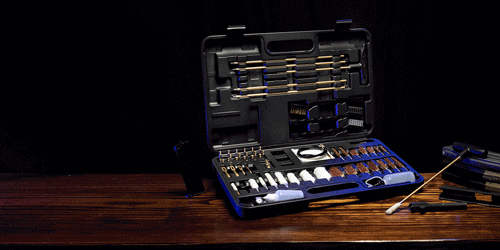Field dressing a rabbit is the process of removing the internal organs and preparing the carcass for cooking. This step is essential to ensure food safety and to make the rabbit easier to handle and store.
Small Warnings Before Field Dressing a Rabbit:
-
When handling wild rabbits, be aware of the risk of tick-borne diseases such as tularemia and bubonic plague, which are more common from May to August. To minimize this risk, consult with local wildlife experts or visit the CDC website to stay informed about any ongoing health concerns in your area.
- When handling wild rabbits, it's essential to take precautions to avoid exposure to diseases like tularemia, a bacterial infection that can be transmitted through skin contact or respiratory droplets. To reduce the risk of infection, wear disposable gloves and a mask to prevent skin contact and inhalation of contaminated particles. This is especially important, as tularemia can cause severe symptoms in humans, including fever, chills, and swollen lymph nodes.
- When field dressing a rabbit, it's crucial to carefully remove any lead fragments, such as BBs or bullets, as soon as possible to avoid metal poisoning and prevent cracked teeth.
- Food safety is crucial when handling wild rabbits. To avoid the risk of parasite infestation, cook the rabbit thoroughly to an internal temperature of at least 165°F (74°C) before eating. It's also important to compost any unused parts, rather than giving them to dogs or other domestic animals, to prevent the spread of disease. When examining the rabbit's internal organs, pay particular attention to the liver. Yellowish spots or other discolorations can be a sign of serious infectious disease, and if you notice any unusual markings, it's best to err on the side of caution and discard the rabbit.
-
Composting animal parts requires careful consideration to ensure the finished product is safe and free from contaminants. However, before composting, it's crucial to verify that it is allowed in your area. Check with local authorities, such as your county extension office or waste management department, to determine if there are any regulations or laws governing the composting of animal parts. If composting is not permitted, they can provide guidance on alternative disposal methods that are safe and compliant with local regulations.

Prepare the Rabbit
Begin by laying the rabbit on its back on a clean surface. If the rabbit is still warm, it's best to let it cool down for a few minutes before starting the field dressing process.
Make the Initial Incision
After harvesting a rabbit, hang it to drain. To prepare for skinning, remove the head by laying the rabbit flat and inserting a heavy knife at the base of the skull, where it meets the neck. Use a firm chop to push through. Then, hang the rabbit from its hindquarter, just under the hock, to drain into a bucket.
Bleeding Out The Rabbit
Bleeding out the rabbit immediately after harvesting can result in a cleaner appearance and potentially more tender meat. This is because the blood is removed from the carcass, reducing the risk of spoilage and improving the overall quality of the meat.

Dressing The Rabbit
It's recommended to dress the rabbit as soon as possible after harvesting, ideally while the carcass is still warm. This allows for easier removal of the skin and helps to prevent spoilage. Dressing the rabbit promptly also helps to improve the overall quality of the meat.
Given the cold weather conditions during rabbit season, spoilage is less of a concern. Nevertheless, it's still a good idea to dress the rabbit in the field, if feasible, to dispose of the internal organs in a responsible manner. Bury them at least 2-3 feet deep to prevent attracting wildlife and to keep the environment clean.
Cut Around the Anus and Genital Area
Start by making a small, precise incision in the belly skin, taking care to avoid cutting too deeply and damaging the organs. Pinch the skin to create a small pocket, and then use your knife to make a shallow cut, just deep enough to separate the skin from the underlying tissues. Continue to pinch and lift the skin as you carefully slit the belly open, using two fingers to keep the skin away from the organs and working your way up to the rib cage.
When you reach the rib cage, you'll need to cut through the breastbone to open up the thoracic cavity and expose the organs. To do this, use a gentle sawing motion with your knife, carefully prying through the bone and cartilage. This should allow you to easily access the organs and continue with the evisceration process.

Remove the Organs and Giblets
As you work to remove the organs, keep in mind that the rabbit's skin is relatively transparent, allowing you to see the underlying organs clearly. Be extremely careful to avoid piercing the urine sac and colon, as this can lead to contamination and spoilage of the meat.
Consider setting aside the organs for a culinary treat. The heart, liver, and kidneys are all edible and packed with nutrients. You can roast them alongside the carcass for a hearty meal, or use them to make healthy dog treats by cooking or dehydrating them raw. This way, you can make the most of your harvest and reduce waste.
Rinse the Carcass
Clean and cool the carcass promptly to ensure food safety and quality. Begin by rinsing the carcass under cold, running water to rapidly lower its temperature and prevent bacterial growth. This initial rinse also helps remove any loose debris, such as fur, blood, or dirt, from the surface and cavities of the meat. Be thorough in your cleaning, and take a moment to tidy up your workspace to maintain a sanitary environment.
In the field, pack the meat loosely in a cooler to keep it cool and fresh. Avoid wrapping it in plastic until it's fully cooled, as this can cause moisture to accumulate and promote spoilage. Target a temperature of 39°F (4°C) or below to ensure optimal preservation.

Pat Dry the Carcass
Dispose of entrails and fur responsibly to maintain a clean and safe environment. You can either pack them out with you and dispose of them promptly, or bury them in a location where they won't attract wildlife or contaminate water sources. However, be aware that some municipalities have laws prohibiting the disposal of entrails in the wild, so it's essential to check local regulations before doing so.
With the carcass cooled, it's time to break it down and prepare it for cooking. Start by trimming away any excess fat, sinew, and silverskin using a boning knife. This will help to refine the meat and remove any tough or unpalatable bits. Rabbit fat, in particular, is not considered desirable and can be trimmed away to reveal leaner, more flavorful meat. By removing these unwanted bits, you'll be left with clean, tender meat that's perfect for cooking in a stew pot, skillet, or oven.





